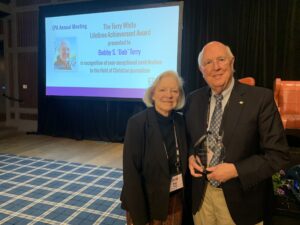
NASHVILLE (BP) — British archaeologists have discovered a massive complex in southern Iraq that Southern Baptist archaeologists say may shed new light on the life and times of the biblical patriarch Abraham.
[QUOTE@left@180=“If Abraham lived near this site and it served as an administrative or religious center, then it is likely that Abraham and his family might have had dealings there.” — Steve Andrews]The structure, believed to be 4,000 years old, is about the size of a football field and may have been an administrative center for the ancient Sumerian city of Ur, believed to be located about 12 miles away and at the height of its power before the time of Abraham. The new find, announced in early April, includes a complex of rooms around a large courtyard, according to the Associated Press. An “Ur” is mentioned in Genesis.
“The find is significant for Mesopotamian archaeology and history,” Steve Andrews, professor of Old Testament, archaeology and Hebrew at Midwestern Baptist Theological Seminary in Kansas City, Mo., told Baptist Press. “As a result of its excavation and the study of its ruins and artifacts — especially if inscribed clay tablets are unearthed — students of Mesopotamia will understand more about the society and culture that flourished there.”
The find, he said, raises two important questions for biblical archaeologists:
— Was the recently unearthed complex part of Sumerian Ur, or was it in another city?
— Was Sumerian Ur the same place as the biblical “Ur of the Chaldeans” — the homeland of Abraham, according to Genesis 11:27-31?
The answer to both questions is uncertain, according to Andrews, with some scholars placing Ur of the Chaldeans farther north in modern-day Turkey. But if the new find is determined to be in Abraham’s homeland, he said, it would help Bible students understand the patriarch better.
“If Abraham lived near this site and it served as an administrative or religious center, then it is likely that Abraham and his family might have had dealings there,” Andrews said. “But the Bible says Terah took Abram and his family and left Ur of the Chaldees to move to Haran (Genesis 11:31). If evidence should identify this site as Ur of the Chaldees, then it would locate a biblical site.”
The biblical phrase “of the Chaldees” (or Chaldeans, depending on the translation) is what makes it difficult to identify this site with Abraham’s homeland of Ur, he said. There was definitely a Sumerian city named Ur near the new discovery, but during Abraham’s life Chaldeans are believed to have lived farther north, suggesting this may not have been the same city referenced in Genesis 11. Evangelical scholars are divided on whether the site in southern Iraq was Abraham’s homeland, according to Andrews.
Even if this site was not Abraham’s home though, it still contributes to scholars’ understanding of ancient Mesopotamia, the general region where the book of Genesis occurred.
In assessing this and other archaeological finds related to Scripture, Andrews urged Christians to be cautious about claims that a new discovery either “proves” or “disproves” the Bible. Most of the time, archaeology’s chief contribution to biblical studies is to illuminate the background and context of Scripture, he said.
“We must remember that the field of archaeology is an art as well as a science,” he said. “Much of it is interpretation, and those seeking to disprove something will always find a way to do so. But the ruins and artifacts are there for all to ponder and study. With proper study, the biblical text comes alive as it is illustrated, illuminated and confirmed by archaeological evidence.”
Daniel Warner, associate professor of Old Testament and archaeology at New Orleans Baptist Theological Seminary in New Orleans, La., agreed that “it’s still too early to tell” the significance of the recent discovery in Iraq. But he noted archaeology’s importance at times in confirming the truth of Scripture.
“To me [archaeology] is the only ‘science’ that is contributing any new information to the study of the Bible,” Warner told Baptist Press. “It can affirm biblical events or people at times — like the Tel Dan inscription confirming [that] King David [existed] — but its major contribution is illuminating and illustrating the biblical world.”
The discovery of an inscription at Caesarea that affirmed the existence of Pontius Pilate is another example of archaeology affirming the Bible, Andrews said. Previously there was no evidence for Pilate outside the Bible.
Other important finds in recent years, according to Andrews and Warner, include:
— The Dead Sea Scrolls, which include some of the earliest surviving manuscripts of the Old Testament.
— The Pools of Siloam in Jerusalem with water systems from the reign of Herod the Great.
— King Herod’s tomb at the Herodium.
— An inscription of the alphabet at Tel Zayit which demonstrates that writing may have been more advanced in the time of David than some scholars believe.
Digs still in progress, including some by Southwestern and New Orleans Baptist Theological Seminary scholars, could unearth additional information about Canaanite engineering, the City of David and the Canaanite city of Gezer mentioned in the book of Joshua.
Thanks to biblical archaeology, Scripture “becomes more real and personal,” Warner said. “Reading about something only takes one so far, but tangible things come alive.”
–30–
David Roach is a writer in Shelbyville, Ky. Get Baptist Press headlines and breaking news on Twitter (@BaptistPress), Facebook (Facebook.com/BaptistPress ) and in your email ( baptistpress.com/SubscribeBP.asp).















